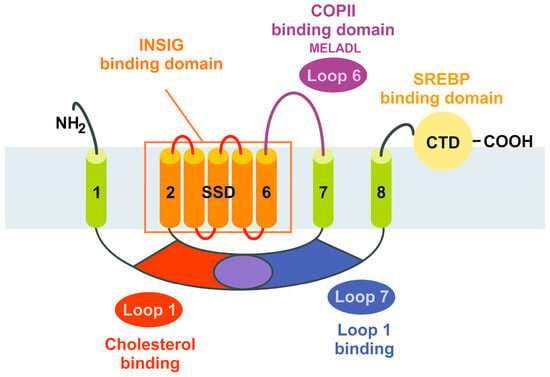February 19, 2024 dialog
This article has been reviewed according to Science X's editorial process and policies. Editors have highlighted the following attributes while ensuring the content's credibility:
fact-checked
peer-reviewed publication
trusted source
written by researcher(s)
proofread
Emerging role of lipids in metabolic disorders and lipid alterations in fatty liver disease

The importance of lipids as one of the fundamental biological compounds is well established as they are important signaling molecules and key components of metabolic disorders. The imbalance in lipid homeostasis and the dysregulation of lipid uptake and trafficking contribute to a multitude of metabolic disorders such as insulin resistance and fatty liver disease and it is crucial to identify new mechanistic insights and the role of genetic variants involved in these disorders.
The genetic and dietary interventions in mice have the potential to translate into clinical studies in human beings with the goal of developing new therapeutic strategies to effectively manage this condition at early stages and to combat the progression of fatty liver to cirrhosis, fibrosis, and hepatocellular carcinoma. The newly identified lipid regulators will represent novel therapeutic targets for dyslipidemia and fatty liver.
A paper titled, "The Role of SCAP/SREBP as Central Regulators of Lipid Metabolism in Hepatic Steatosis," has been published in International Journal of Molecular Sciences.
SCAP: The master regulator of cholesterol homeostasis
The membrane lipid composition in the cells must be tightly regulated to maintain lipid homeostasis. SCAP (sterol regulatory element binding protein SREBP cleavage activating protein) is the master regulator of cholesterol homeostasis and membrane cholesterol levels are regulated by SREBP's, SCAP and INSIG proteins.
SCAP is identified as an important therapeutic target for fatty liver disease as it is a chaperon protein to escort SREBP, which is the main transcription factor involved in de novo lipogenesis, from endoplasmic reticulum (ER) to golgi. The inhibition of SCAP has been shown to resolve hepatic steatosis and normalize hepatic triglycerides in mice studies.
The development and progression of MASLD is driven by alterations in lipid profiles induced by SERBP activation. Furthermore, targeting SCAP could be more effective in alleviating steatosis as SCAP is the central regulator necessary to activate all three isoforms of SREBP.
Single nucleotide polymorphisms: MBOAT7 gene
The contribution of single nucleotide polymorphism of the MBOAT7 gene has been recently in the spotlight and genetic ablation of this variant resulted in fatty liver phenotype and activation of de novo lipogenesis by increased expression of SREBP1c genes involved in lipid synthesis. This finding is supported by normalization of hepatic lipid content by liver-specific deletion of both MBOAT7 and SCAP.
Concluding remarks
The central role of SCAP/SREBP axis in regulating lipid homeostasis is well documented and targeting this axis may open new horizons in the treatment strategies for fatty liver disease and other metabolic disorders.
The SCAP/SREBP axis is linked to several signaling pathways and the development of small molecule modulators targeting this axis can be an attractive option for treating MASLD. In addition, the single nucleotide polymorphism associated with MBOAT7 genetic variant could be a potential therapeutic target for reducing hepatic de novo lipogenesis.
This story is part of Science X Dialog, where researchers can report findings from their published research articles. Visit this page for information about ScienceX Dialog and how to participate.
More information: Preethi Chandrasekaran et al, The Role of SCAP/SREBP as Central Regulators of Lipid Metabolism in Hepatic Steatosis, International Journal of Molecular Sciences (2024). DOI: 10.3390/ijms25021109
Dr. Preethi Chandrasekaran is currently a Research Scientist at the University of Texas Southwestern Medical Center. Prior to this, she was a faculty member at the University of North Texas. Preethi completed her Bachelor of Medicine and Bachelor of Surgery at Government Kilpauk Medical College, India. She then went on to earn her master’s degree in microbiology and Immunology from Northern Illinois University. At present, she is a part of the editorial board in several journals. Currently, her research focuses on pathways of biosynthetic metabolism in the context of fatty liver, diabetes, atherosclerosis, lipids, and neurological disorders. In addition, she is immensely involved in biochemical and structural aspects of G-protein coupled receptors such as Orexin and Cannabinoid receptors using NMR, Cryo EM and X-ray Crystallography to identify potential drug targets for dyslipidemia and sleep disorders.





















